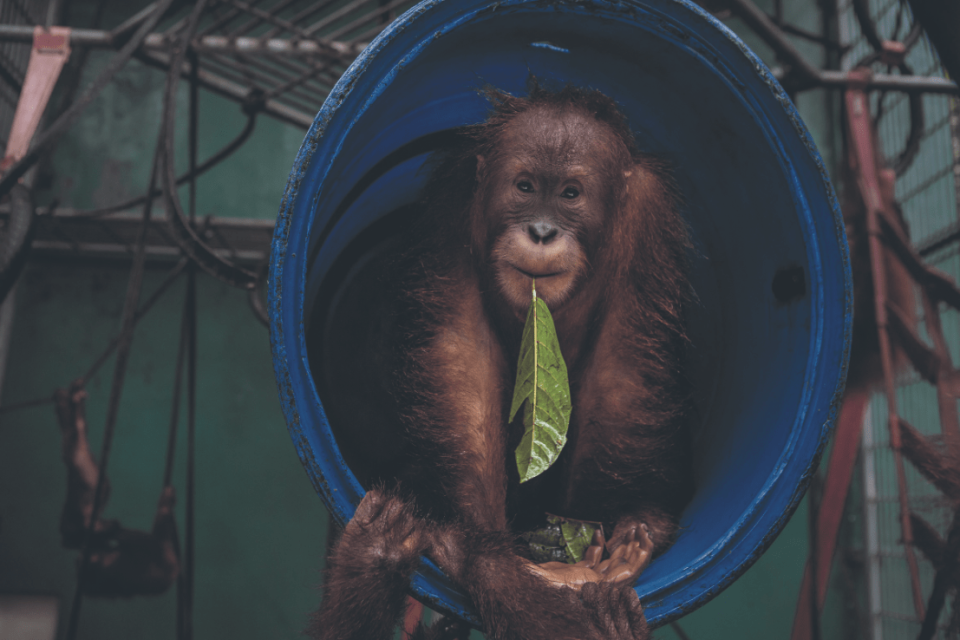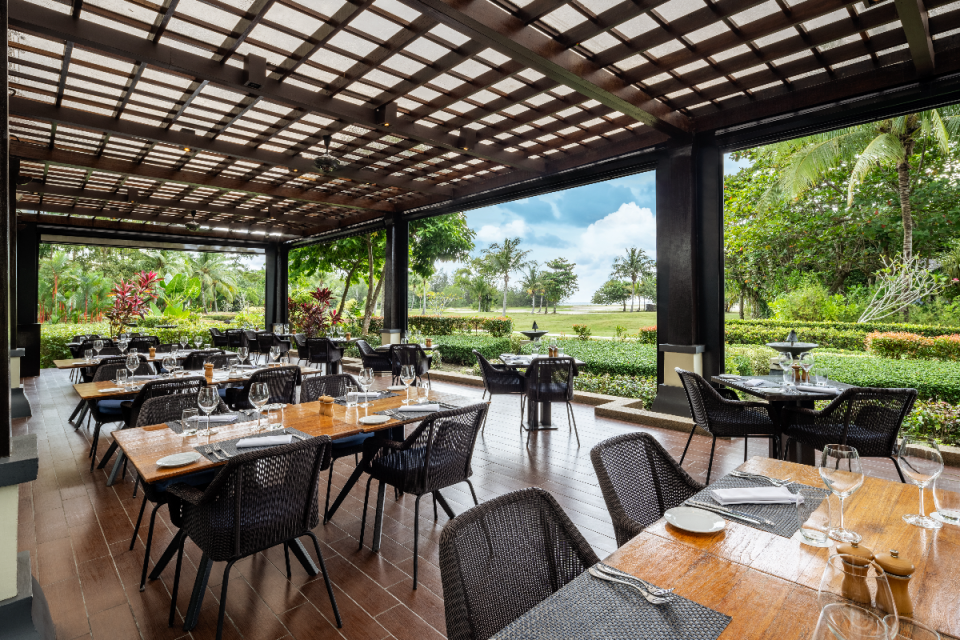I spotted the last wild orangutans in Borneo – you can too

Borneo feels incredibly remote and untouched. Then there are the orangutans. By Siobhan Grogan
I’m barely ten minutes’ walk from the hotel swimming pool when I spot my first tarantula. Moments after leaving the grounds on foot at 4.30am for a sunrise hike, my guide, Laslie, stops dead in front of me. It’s completely silent and pitch black, yet he’s somehow spotted the palm-sized spider on a tree just two metres away. It scuttles away under the light of his torch and we walk on.
A few seconds later, I see another, then another. When I spy a venomous neon green pit viper curled almost imperceptibly around a tree branch just above my head, I start to wish I’d stayed in bed with the door locked. Even with the comforts of a five star hotel you can feel how remote you are in the jungles of Borneo. The world’s third largest island, it is divided between Malaysia, Indonesia and Brunei but is best known for its extraordinary biodiversity, miles of ancient rainforest and as one of the last two places in the world besides Sumatra where orangutans live in the wild. To see them, you need to get there fast.
The WWF says there are only 104,700 of Asia’s great ape left and it’s estimated that their population will decrease by more than 80% by 2060. This is due to the loss of their natural habitat through logging and, more recently, as forests are cleared to build plantations to provide the world’s palm oil. Further deforestation is imminent since Indonesia started building a brand-new capital city to replace Jakarta on Borneo in 2022. For now at least, Malaysian Sabah – in the island’s north – is a wildlife wonderland.
Nine orangutans pick over the watermelons and bananas, including one enormous entirely wild adult male – an extremely rare sight
It’s claimed that there are more flora and fauna in 10 sq-km here than in all of North America and Europe combined. It’s not difficult to believe at my hotel, the luxe but laidback Shangri-La Rasa Ria, which is sandwiched between a vast stretch of white sand lapped by the South China Sea and a 64-acre jungle reserve at the foot of Mount Kinabalu. Between sunbathing and spa visits, I see otters catching fish in the lake, monitor lizards slinking through the lawns and a rare rhinoceros hornbill perched in a tree on the golf course. On my dawn walk in the neighbouring reserve, there are ants the size of bumble bees, miniscule mouse deer and even a scorpion.
Later, on a sunset boat ride down the nearby Tembara River, tiny lights from fireflies flicker from trees on the bank, sparkling in the inky blackness. Though a large resort with an international name, the hotel never feels removed from its extraordinary setting, with daily beach clean ups guests can join, a Malaysian street food market instead of a bland buffet restaurant and even a traditional bedtime story placed sweetly on the pillow each night. Sadly, the orangutans are a little further away. The town of Sandakan is a short 50-minute plane journey – just doable in a long day – and its Sepilok Orangutan Rehabilitation Centre is one of the few places you stand a chance of clapping eyes on the hard-to-find animal.
Read more on trekking in Malaysia: seeing Malaysia from jungle to sea
Sandakan is also worth visiting to see the spectacular hilltop Puu Jih Shih Buddhist temple and to grab lunch in the Central Market, where a steaming bowl of wonton noodle soup costs less than £1. Walk it off afterwards at the moving Sandakan Memorial Park which commemorates the Allied prisoners of war who were imprisoned here in the 1940’s then forced to march 260km to their death. The orangutan conservation facility itself is within a 43 sq-km rainforest reserve where wild orangutans roam as they wish. Many here were saved from the pet trade or have lost their homes or mothers, so the centre teaches them life skills to become independent, which takes more than a decade.
Feeding happens twice a day but the orangutans are free to rove wherever they choose, so there’s still no guarantee of seeing them during a visit unless they decide to return for an easy lunch. It all feels a little sterile at first. There are neat wooden walkways through the trees and an observation platform overlooking a feeding tower where macaque monkeys swarm waiting for dinner. Yet then the trees rustle, a streak of orange emerges and a shaggy-haired beast swings through the branches, grabs a handful of sugarcane and lollops off, chomping. Another flies into view, dangling upside down from a rope while it feasts on a cabbage. Soon there are nine orangutans of all sizes picking over the watermelons and bananas, including one enormous entirely wild adult male – an extremely rare sight even here, my guide tells me. Once they’ve eaten, they disappear off into the leaves and the jungle falls silent again.
Days later, I stop in Malaysia’s capital, Kuala Lumpur, on the way home and it feels like I dreamt the whole thing. A busy, in-your-face metropolis crammed with futuristic skyscrapers, rainbow bright temples, gleaming malls and chaotic markets, it’s a startling contrast to Borneo’s rainforests but makes for the ideal twin-centre trip – especially as British Airways will restart daily flights to the city from London Heathrow from this November. Better still, with the Malaysian ringgit currently extremely low against the pound, everything feels like a bargain.

My hotel, Traders Hotel, Kuala Lumpur, is directly opposite the Petronas Towers with newly renovated rooms and the best view in town yet prices start from just £60 per night. Head to Petaling Street in Chinatown and you’ll eat like a king for next to nothing too. Strung with red lanterns and lined with shops selling souvenirs and knockoff designer goods, this pedestrianised neighbourhood is a dream for street food lovers. Try hot crispy pancakes stuffed with crushed peanuts and cooked onthe back of a pushcart, traditional soyabean pudding from a stall that has served the same dish here for nearly 100 years and a winter melon drink made with rock sugar from long-term stand, Air Mata Kucing.
Don’t leave without visiting Batu Caves where Hindu temples are housed inside caves carved into a limestone hill, all watched over by a towering gold statue of Murugan, the Hindu god of war. Inside, bats flap overhead and monkeys scamper over the 272 brightly coloured steps, ready to snatch food from any unsuspecting visitor. Turns out you don’t need to be anywhere near a rainforest to be surprised by Malaysia’s extraordinary wildlife.
Visit Borneo yourself
Rooms at Shangri-La Rasa Ria start from £223 per night. Rooms at Traders Hotel start from £60 per night with breakfast
Read more: Bologna is the REAL food capital of Italy – here’s why
Read more: The 5 best Paris hotels to book for the 2024 Olympics
Read more: Williamsburg, once a Mecca for hipsters, is now a luxury hub

 Yahoo Finance
Yahoo Finance 